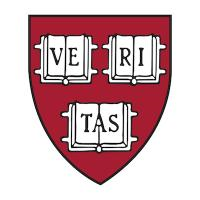What do they do?
Create special effects or animations using film, video, computers, or other electronic tools and media for use in products, such as computer games, movies, music videos, and commercials.
Also known as:
3D Animator (Three-Dimensional Animator), 3D Artist (Three-Dimensional Artist), Animation Producer, Animator, Artist, Digital Artist, Graphic Artist, Graphics Specialist, Media Producer, Motion Graphics Artist, Multimedia Artist, Multimedia Producer, Multimedia Specialist
-
8.2%
Change
Select a state to see its job growth rate ranking9,400Job Openings
Select a state to see its net job growth ranking
Looking for colleges that offer a specific major? Use the College Match Tool to find your best-matched schools and discover your estimated Net Price!
- Bachelor's degree (42%)
- Some college, no degree (19%)
- Master's degree (13%)
- High school diploma equivalent (13%)
- Associate's degree (8%)
- Less than high school diploma (3%)
- Doctorate or Professional Degree (2%)
Most Popular Majors that prepare Special Effects Artists and Animators
-
#1
-
Degrees Granted
451
-
Female Students
290
-
Male Students
161
-
Median Starting Salary
$42,300
-
-
#2
-
Degrees Granted
243
-
Female Students
141
-
Male Students
102
-
Median Starting Salary
$39,600
-
-
#3
-
Degrees Granted
194
-
Female Students
136
-
Male Students
58
-
Median Starting Salary
$41,200
-
-
#4
-
Degrees Granted
176
-
Female Students
56
-
Male Students
120
-
Median Starting Salary
$42,300
-
-
#5
-
Degrees Granted
135
-
Female Students
85
-
Male Students
50
-
Median Starting Salary
$37,200
-
People in this career often have these skills:
- Active Listening - Giving full attention to what other people are saying, taking time to understand the points being made, asking questions as appropriate, and not interrupting at inappropriate times.
- Reading Comprehension - Understanding written sentences and paragraphs in work-related documents.
- Critical Thinking - Using logic and reasoning to identify the strengths and weaknesses of alternative solutions, conclusions, or approaches to problems.
People in this career often know a lot about:
- Computers and Electronics - Knowledge of circuit boards, processors, chips, electronic equipment, and computer hardware and software, including applications and programming.
- English Language - Knowledge of the structure and content of the English language including the meaning and spelling of words, rules of composition, and grammar.
- Design - Knowledge of design techniques, tools, and principles involved in production of precision technical plans, blueprints, drawings, and models.
- Communications and Media - Knowledge of media production, communication, and dissemination techniques and methods. This includes alternative ways to inform and entertain via written, oral, and visual media.
- Customer and Personal Service - Knowledge of principles and processes for providing customer and personal services. This includes customer needs assessment, meeting quality standards for services, and evaluation of customer satisfaction.
- Sales and Marketing - Knowledge of principles and methods for showing, promoting, and selling products or services. This includes marketing strategy and tactics, product demonstration, sales techniques, and sales control systems.
- Telecommunications - Knowledge of transmission, broadcasting, switching, control, and operation of telecommunications systems.
People in this career often have talent in:
- Oral Comprehension - The ability to listen to and understand information and ideas presented through spoken words and sentences.
- Written Comprehension - The ability to read and understand information and ideas presented in writing.
- Oral Expression - The ability to communicate information and ideas in speaking so others will understand.
- Visualization - The ability to imagine how something will look after it is moved around or when its parts are moved or rearranged.
- Near Vision - The ability to see details at close range (within a few feet of the observer).
- Problem Sensitivity - The ability to tell when something is wrong or is likely to go wrong. It does not involve solving the problem, only recognizing that there is a problem.
- Deductive Reasoning - The ability to apply general rules to specific problems to produce answers that make sense.
- Visual Color Discrimination - The ability to match or detect differences between colors, including shades of color and brightness.
- Written Expression - The ability to communicate information and ideas in writing so others will understand.
- Originality - The ability to come up with unusual or clever ideas about a given topic or situation, or to develop creative ways to solve a problem.
- Speech Clarity - The ability to speak clearly so others can understand you.
- Fluency of Ideas - The ability to come up with a number of ideas about a topic (the number of ideas is important, not their quality, correctness, or creativity).
- Information Ordering - The ability to arrange things or actions in a certain order or pattern according to a specific rule or set of rules (e.g., patterns of numbers, letters, words, pictures, mathematical operations).
People in this career often do these activities:
- Create computer-generated graphics or animation.
- Develop artistic or design concepts for decoration, exhibition, or commercial purposes.
- Coordinate logistics for productions or events.
- Draw detailed or technical illustrations.
- Construct distinctive physical objects for artistic, functional, or commercial purposes.
- Prepare production storyboards.
- Convert data among multiple digital or analog formats.
This page includes data from:

 Occupation statistics: USDOL U.S. Bureau of Labor Statistics Occupational Employment Statistics
Occupation statistics: USDOL U.S. Bureau of Labor Statistics Occupational Employment Statistics
 Videos: CareerOneStop, USDOL/ETA and the Minnesota Department of Employment & Economic Development
Videos: CareerOneStop, USDOL/ETA and the Minnesota Department of Employment & Economic Development








